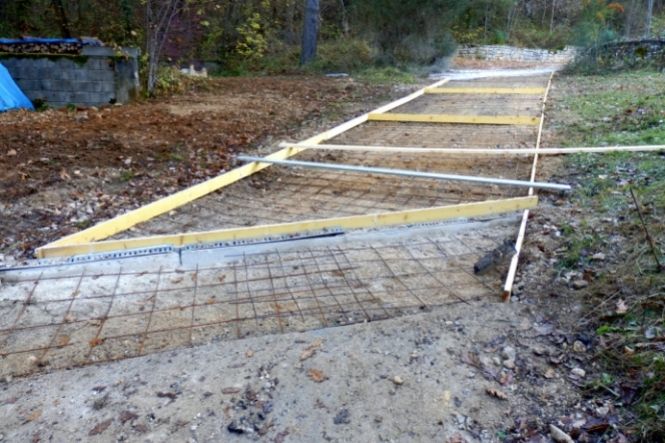We’ve already covered most of the ‘wet’ methods of jointing slabs and paving stones on Driveway Expert and touched on loose jointing too. There is a halfway house that blends the good looks of dry jointing, using grit or sand, with the solidity of wet jointing, and that is adding stabilisers to loose jointing.
Pros and Cons of Dry Jointing
Loose jointing is popular in domestic driveways and paths because it’s less troublesome to apply than the various wet jointing methods. It’s also harder to do it wrong, whereas mistakes with cement can be a devil to chip off; it’s easy to damage the flag or block when you try. The worse you can do with loose jointing is not fill the joint properly, in which case you just top it up.
But dry jointing a driveway has one major disadvantage because of its very nature. The grains of sand or grit are loose and although they bed down in the first few months after the driveway has been laid, inevitably will not stay in place. Wind, rain and water run-off will drive the small grains out of the jointing gaps and across the flags, eventually disappearing in the grass or borders.
You can’t really use aggressive cleaning methods like power washing or jet washes either. These are great for washing the paving of a driveway but if it has been loose filled they will just blast the jointing grains across your property. If you’re unlucky, they’ll sand-blast the glossy paintwork of your pride and joy at the same time.
Solution to the Loose Joining Problem
This problem has led to the development of a number of proprietary compounds that stabilise the grains to stop them rushing off so eagerly. Some come in liquid form and are spread over the completed surface, others come as a fine powder which is brushed over the surface and then activated by spraying the area with water.
Many of these compounds also claim to inhibit weed growth, which is another problem with loose filling. Some will wash off the surface of the blocks and others are intended to seal the face of the slabs as well as binding the loose jointing material.
It’s important to realise that adding a stabiliser will not make a dry joint as strong as a wet joint. The advantage of wet jointing is its strength, binding the slabs together, but a stabiliser compound added to loose jointing is more about encouraging the grains to clump together. It has little or no effect on the bond between blocks.
Stabiliser Compounds
Each of the stabiliser compounds on the market today are different to each other, no clear market leader has yet emerged. So it’s important to check the label to make sure that the compound you choose is approved for use on the type of blocks you are laying, the size of the loose jointing material and the width of the gap.
The stabiliser compounds are mostly applied after the joints have been filled, seeping down into the gaps and clumping the loose filling. In some cases the loose grains are stuck to the edges of the slabs as well. It is crucial to read the manufacturers’ instructions and warnings because each compound is different.
Check Out Stabiliser Compounds
If you’re laying a block or slab driveway yourself and don’t want the mess of dry jointing then loose jointing is worth investigating. By selecting the right stabiliser compound you can keep the good looks of loose jointing without creating an extra maintenance headache.

